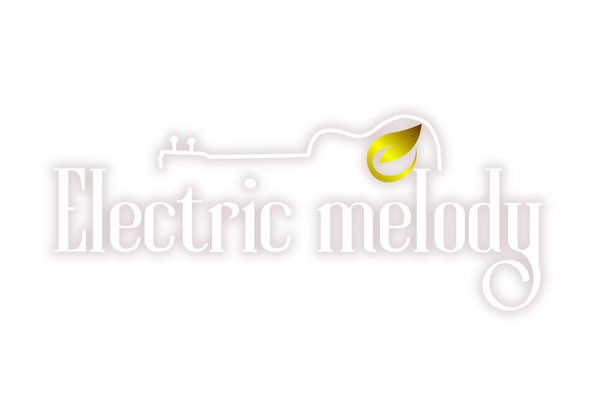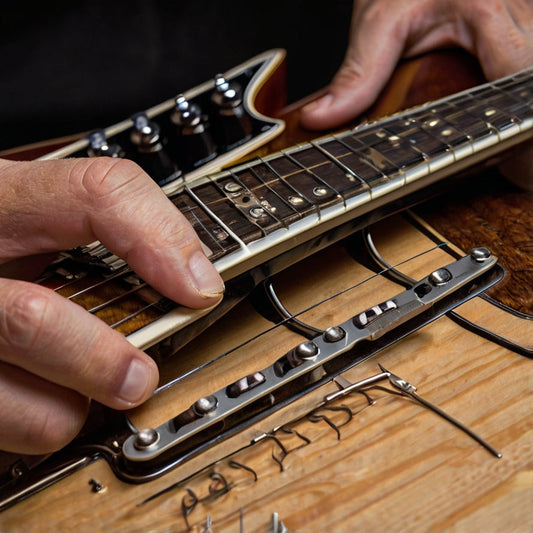How to Become A Phenomenal Sight Reader
Sight-reading is an important skill that every musician needs. It may be one of your most marketable skills as a musician. In the real world, unless you are a concert musician, you often don’t have a lot of time to learn a piece of music. Studio musicians, accompanists, church musicians, each one of them needs to do a healthy amount of sight reading in their daily jobs.
Like all other musical skills, sight reading is learned. That’s not to say you won’t learn the basics of sight reading by just being a musician, but you likely won’t get proficient at it unless you practice sight reading consistently.
Reading vs. Sight Reading
First, we need to define what sight reading is. It’s not reading music. When you open a piece of music for the first time and read through it, you’re sight reading. You can only sight read a piece once. If you’ve ever looked at the music before, it’s really not sight reading.

Components of a Good Sight Reader
To become a good sight reader you must have a combination of many different skills. If we understand each component of a good sight reader, we can work on those skills individually.
Learn to Read!
This seems obvious, but it’s the foundation of a good sight reader. If you are new to music, you need to make sure you can identify notes on the page like you can identify letters on a page. If you saw the letter “C”, would you need to run through the alphabet before you knew what letter it was? Of course not.
You just know. Music is no different. If you look at a note and don’t know what it is, it’s like not knowing the alphabet. You can’t even begin to read if you don’t know the alphabet. If you see a C in your music, you should know immediately what note it is and where you can find it on your instrument.
Learn Chords
If your instrument can play multiple notes at the same time, like a guitar, violin, or especially a piano or organ, you have more to learn than just the alphabet. You’ll need to learn what chords look like. Great sight readers see groups of notes.
If you can read any language well, you no longer have to sound words out. As a child you would sound out words, because you never read them before. Now you just look at a word and know what it says. It’s actually pretty insane if you really think about it. An average native English speaker knows between 20,000 and 40,000 words. Those words are memorized. Every time you see a word you could read them without sounding them out.
Sight reading chords work the same way that language does. If you’re familiar with a chord, you don’t have to look at each individual note and make sure you’re playing it right. You’ll see a C Major chord and you’ll play a C Major chord. As simple as that. Just like you see a word written down and you say that word, you don’t need to sound it out.
When you compare music to language, you’ll find there are much fewer chords to memorize than there are words in the English language. If you take every practical chord available, there are likely around 4000 playable chords. There are about 180,000 words in the dictionary, but you don’t need to know them all. You can live life just fine with around 20,000 words. In the same way although there are 4000 chords possible you can get by just fine with a small fraction of that.
You must have them memorized though. How can you do that? Read them often. For pianists, hymns are a great way to become familiar with basic chords. Buy a hymnbook and read through it every day. Once you get the basic chords memorized, your sight reading ability will increase dramatically.
Learn Music Theory
Now that you can read notes and chords fluently you’ll need to understand music theory as well. Music theory is basically the study of how music is made. Yes, learning chords is part of music theory, but there is more to it. It’s also about how those chords work together.
Why is this important for sight reading? Well because if you know how music is constructed, you’ll be able to guess what comes next. Chords lead to other chords. It doesn’t mean that 100% of the time one chord will be followed by another, but there are many scenarios where it’s almost guaranteed what chord will come next.
If you know your theory, you’ll know automatically that after this G Major 7 chord, you might just need to get ready for a C Major chord.
This is an extremely simplistic example, and it doesn’t work for all cases. But understanding how music is put together will help you to predict what comes next. Even if your prediction is wrong, you’ll have a solid foundation about what the piece is doing and where it’s moving to.
Study Rhythms
Do you understand rhythms well? You need to learn how to count anything. I mean anything.
There are a lot of rhythm books on the market with difficult rhythms that you can work through. My suggestion is to work through these books until you internalize as many rhythms as you can.
As an example, if I told you to clap out 2 quarter notes and a half notes, it would likely be simple for you. But what if you had something more difficult? Try the rhythm below:
If you have some experience with music, you’ll likely be able to sit down and figure this rhythm out with no problem. But can you do it on sight? As a sight reader you have to be ready for whatever rhythms the music throws at you. If I asked you to clap out a quintuplet or septuplet right now with a metronome, could you do it? Do you even know what those are? Would they be accurate the first time? A lot of this rhythm practice can be done throughout your day, in class or at the grocery store. If you have a strong grasp of rhythms, your sight reading will take a huge jump in proficiency.
Learn Technique
When I say learn technique I’m not advocating practicing technical exercises all day. I’m actually of the opinion that unmusical exercises are almost always a waste of time. I find that you can learn techniques through the music you’re working on without wasting time working on something you’ll never perform. This is really a topic for another post though.
Scales and arpeggios are an exception to my rule above. Scales and arpeggios not only teach you technique, but they also teach you theory. It’s much easier to understand music when you can comfortably play all of your major/minor scales and arpeggios.
In addition to aiding in theory, they are found so often in music in the exact form you’ll practice them in, that you’re not wasting any time by learning them. You will use all of them at one point in real music.
The reasoning technique is important when it comes to sight reading, because if something is technically too difficult for you, you won’t be able to sight read it as is. There’s just no getting around it.
If sight reading was the only skill you wanted to learn in life, go ahead and practice technical exercise after technical exercise. You may get lucky enough to find that exact exercise in music you’re sight reading.
For people who want to play music in addition to sight reading (probably everyone), learn your scales and arpeggios really well, and learn techniques from your music.
Improve Your Relative Pitch/Sight Singing
Having a great ear can help with memory, and yes even sight reading. Similar to understanding music theory, if you have a great ear you’ll have a pretty good idea as to what comes next in the music.
If you can sing the rest of the music in your head, and confidently play that out on your instrument, you’ll be ready for some last minute improvising. Having a great ear is a fantastic fallback. It can even help you fill in chords if you can’t keep reading.
Practice Everyday
This is the most important piece of the puzzle. You need to practice every day. Yes, every day. You can’t “cram” sight reading. If you’re going to practice though, you need to know how to practice correctly. With specifically practicing sight reading, and not the components above, there are only two approaches.
Practice with a Metronome
Don’t Stop. Play from beginning to end regardless of how poorly you play. In a real sight reading situation this is exactly what you would have to do. If you’re in an orchestra, the conductor isn’t going to wait for you to catch up. If you’re accompanying a choir, a vocalist, or instrumentalist the people you’re accompanying expect you to keep going as well.
Simplify the Music
You need to learn to stay with the people you’re playing with. Leave out whatever you need to leave out in order to keep the important sections. This means if there is a difficult technical passage coming up that you know you won’t be able to sight read, you should either not play it, or play portions of it.
If there are a lot of 16th notes just play the first note of every beat or every other beat. Use your head though. Some simplifications may not make sense in context of the music. This is a decision you have to make while you’re playing. This is why practicing sight reading with a metronome is so important, it will help you find ways to simplify music the way you need to.
When practicing with a metronome you just need to keep up. That’s it.
When I was in high school I was amazed by a pianist that was playing for our high school musical. Once I looked at all the music she had to learn and asked her “You learned all this?” She smiled and said, “No I just play the melody and add in some chords”. Granted she wasn’t sight reading, but she found a way around having to learn tons and tons of music. She just basically made it up. She was really good, and I bet no one could tell. Good sight readers know how to just make it up.

Read Ahead
You’ve likely heard it before, but it really needs to be said again. Read ahead. What I mean by that is that you should never be reading the notes you are actually playing. You should be reading as far ahead as possible while you are playing measures earlier on. This is a pretty hard thing to do, and even good sight readers have a hard time with it.
You need to understand how short term memory works in order to maximize the effectiveness of reading ahead. By reading ahead you are memorizing a section of music while playing a section you have just memorized. This kind of memory will only be good for a few seconds. But you only need it to last seconds. Try it out by keeping your eyes just one or two beats ahead of where you are.
It will feel uncomfortable at first, but as you keep doing it, you’ll realize you can do it more comfortably. After you are comfortable with a beat or two, keep expanding how far you are reading ahead. You’ll be able to read out further as your knowledge of music theory increases as well. You’ll understand this concept more as you read the memory article I linked to earlier.
Practice Without a Metronome
All sight reading practice doesn’t have to be with a metronome. That kind of practice will teach you how to play in time, but it won’t help you read new chords, notes, or rhythms any better.
When playing without a metronome play it as slow as needed.
You don’t have to actually spend real time on sections of music. The goal here is just to become familiar with as many patterns and groups of notes as possible. Play it through correctly and then move on. Don’t spend any time doing repetitions of difficult sections.
You need to actually read it correctly for this to work though. So keep it slow, turn your metronome off, and work through a piece of music. It shouldn’t take you long.
Find a Book with LOTS of Music
This is key for sight reading. Whatever your instrument, you need a book full of music. For pianists, hymn books work very well. For other musicians anthologies are helpful. When you practice, open up the book to a random page and just start sight reading. Make an effort to do this every day and you’ll improve.
What Level of Music Should You Use
This is an often debated question. Should you be sight reading music AT your level? Maybe below your level? Way above your level? A little of each is the right answer. Music below your level is a great way to practice looking ahead. Music that is too difficult will make looking ahead difficult as well.
Music at your level is a great way to learn new patterns, chords, and note groupings that will help you read other music. Music above your level can be helpful to teach you to simplify the music. Each level of music has its place. Don’t limit yourself.
Spend Time Before You Begin Looking at Music
Before you sight read anything you should look through the music to get a good idea as to the key signature, difficult passages, difficult rhythms, etc. This should be where you start the process of looking ahead. Memorize the first beat or two so you can stare a beat or two ahead always.
In a real sight reading situation, you may have a few minutes to look over the piece. This is where mental practice can really come into play.
Conclusion
Sight reading is a skill. It needs to be learned. Spend some time every day and you’ll be astounded by the progress you make in just a few short months.



